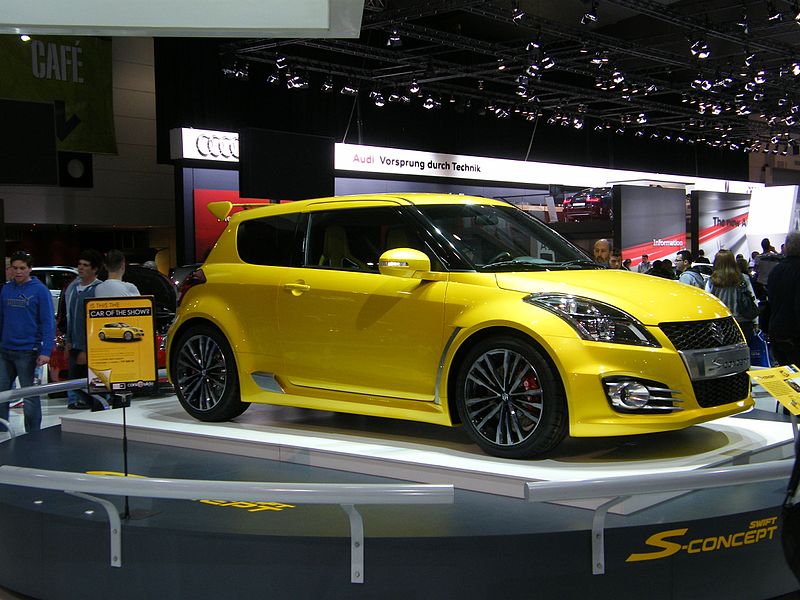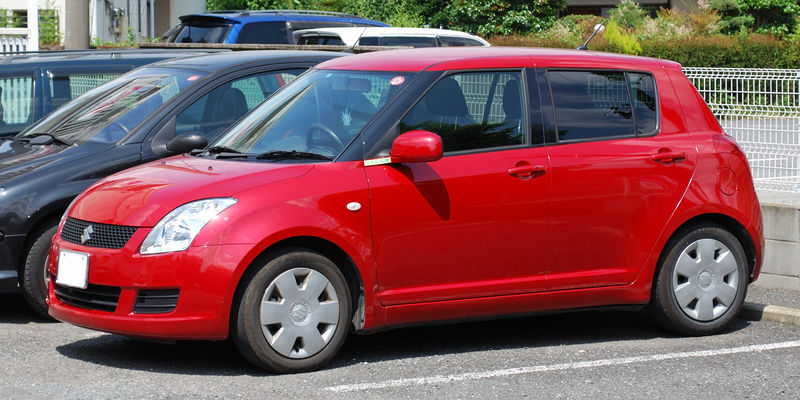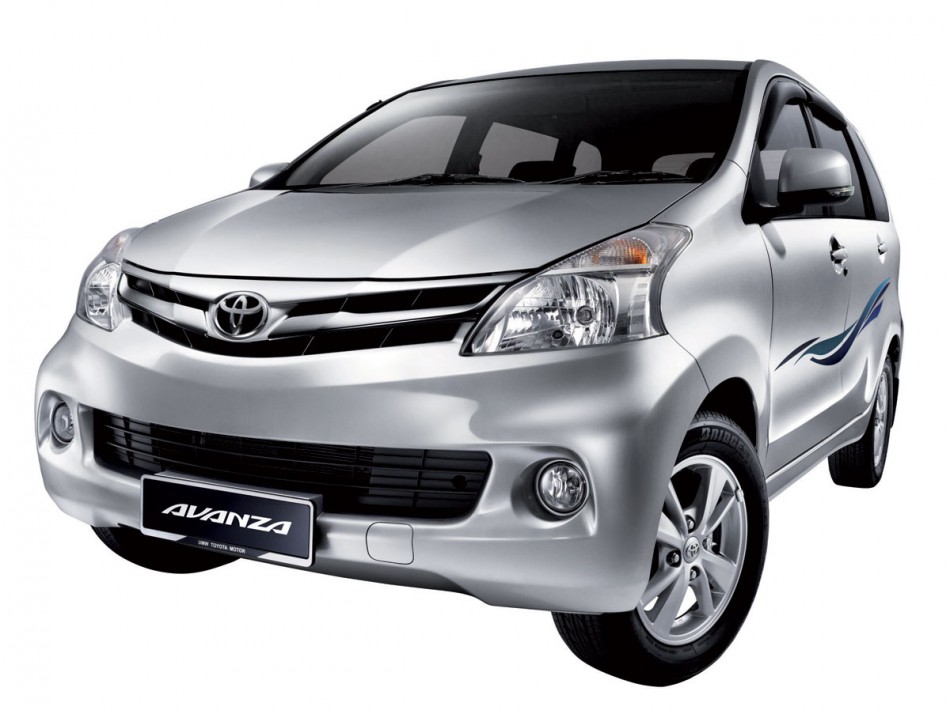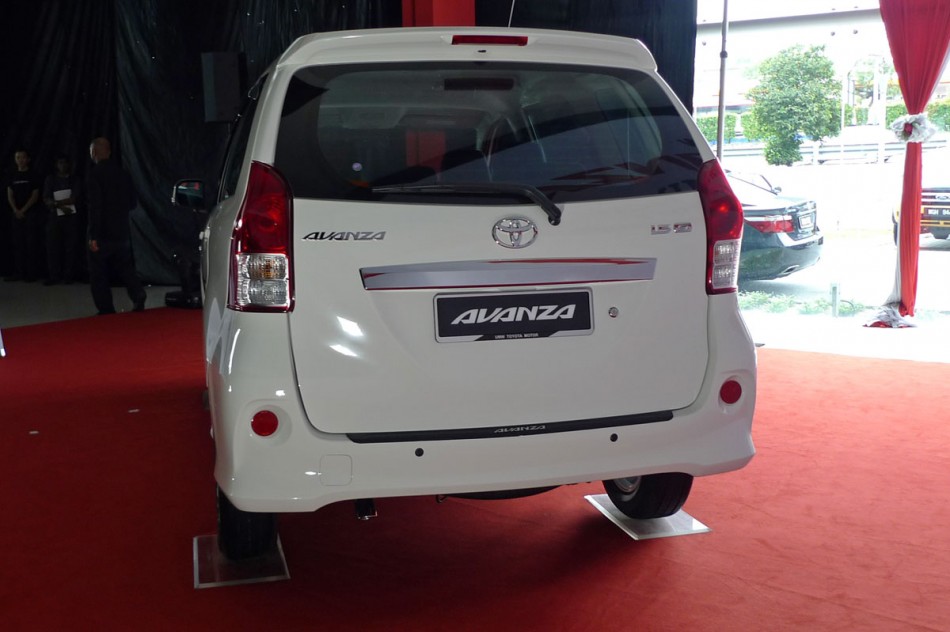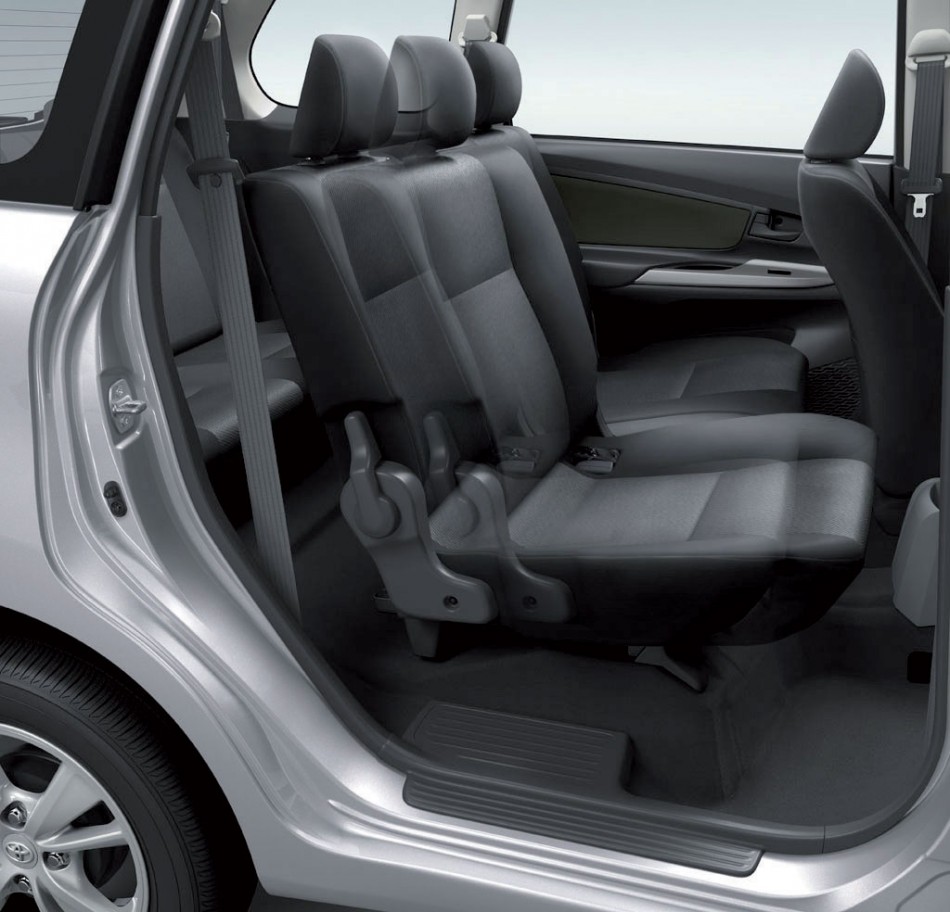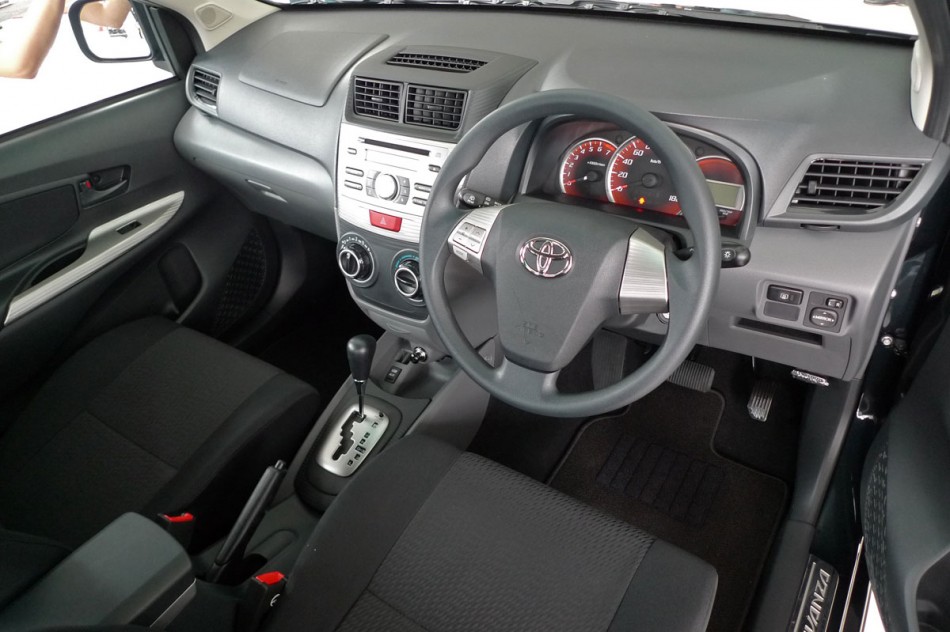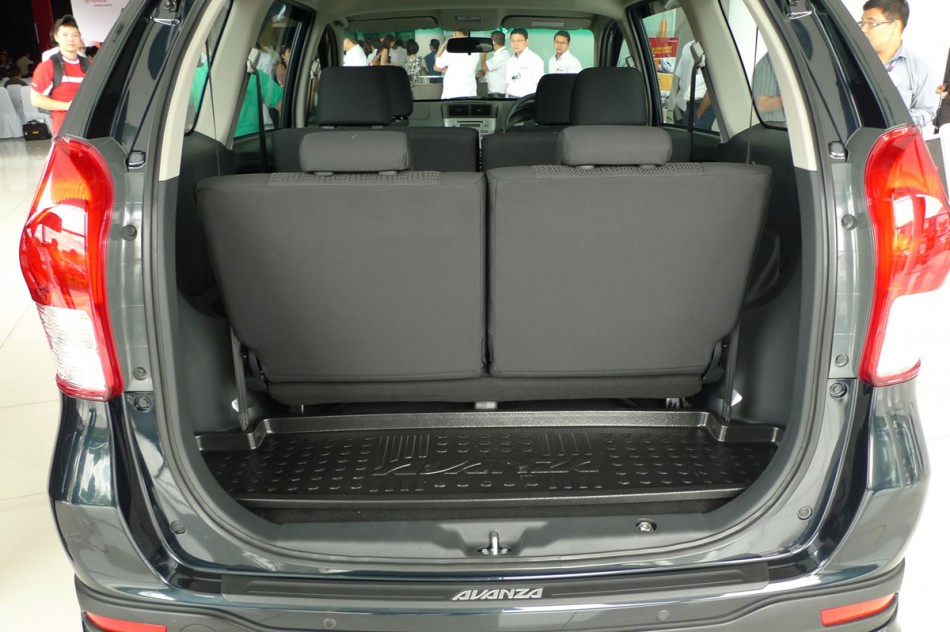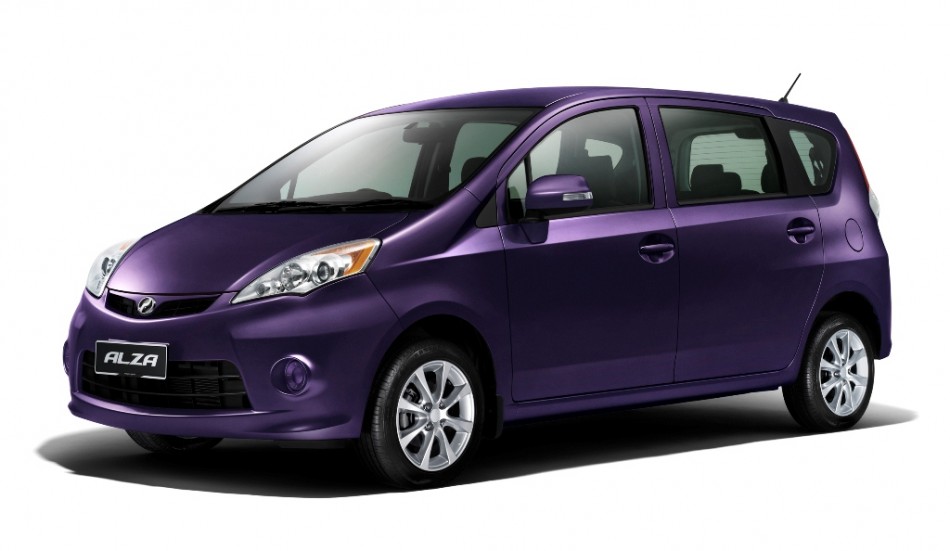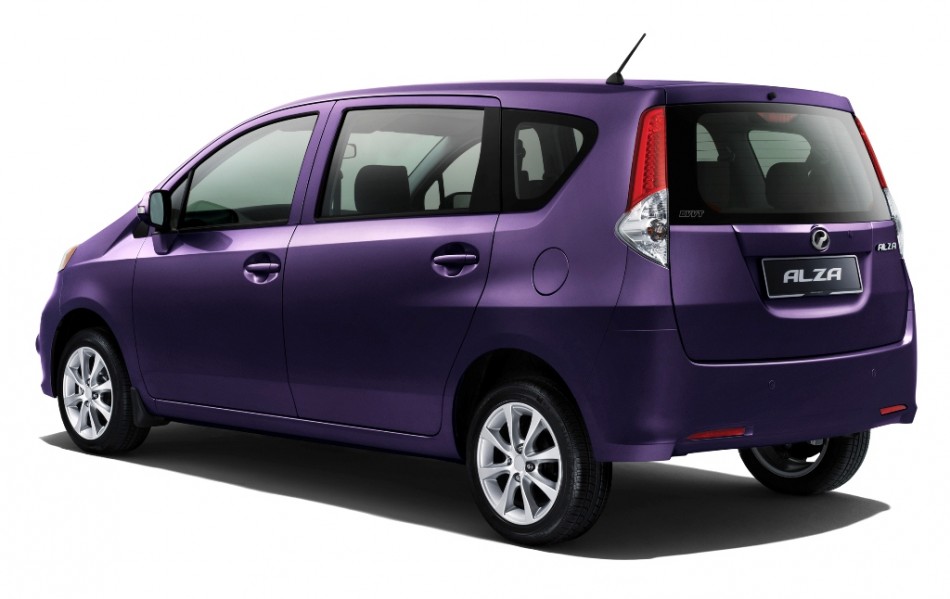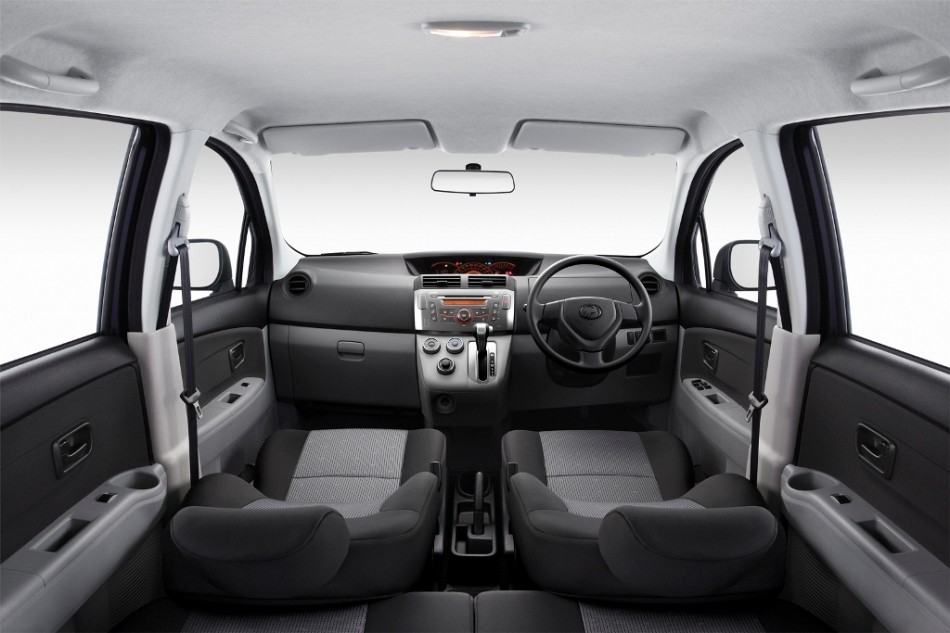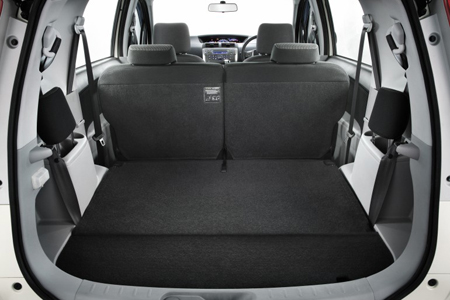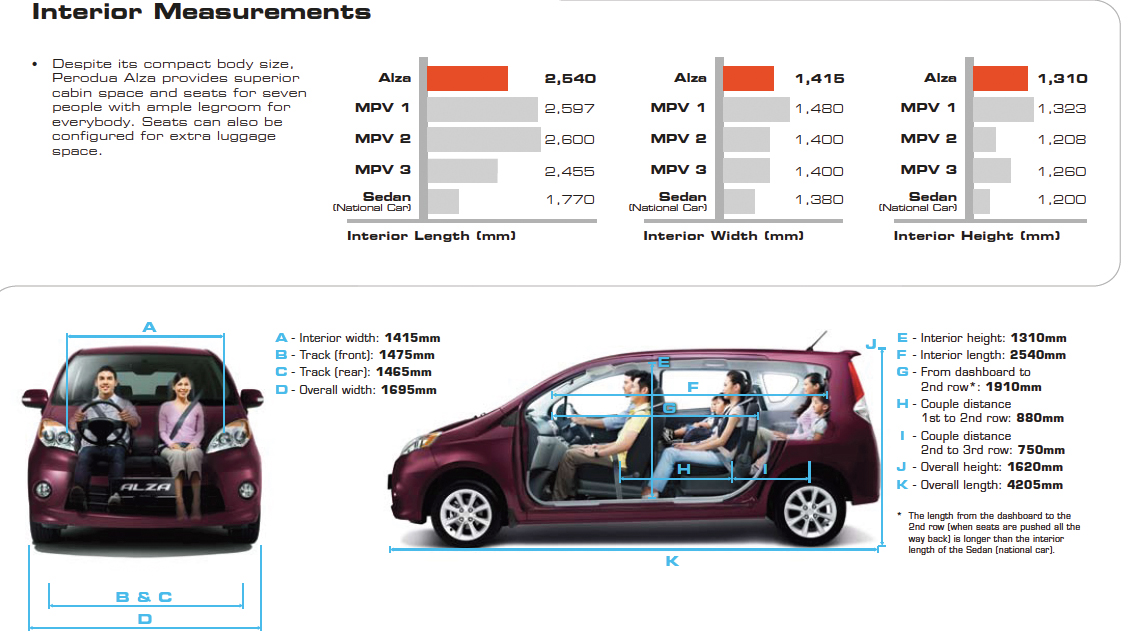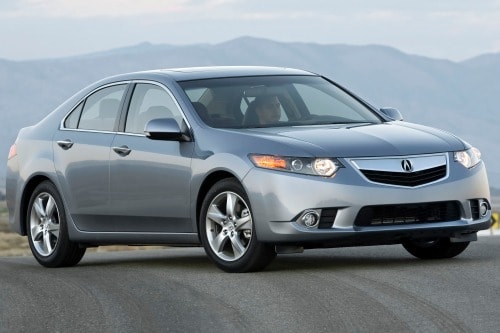Auto Perodua Myvi
Thursday, July 26, 2012
Ford Fiesta
The 2013 Ford Fiesta ranks 1 out of 41 Affordable Small Cars. This ranking is based on our analysis of 31 published reviews and test drives of the Ford Fiesta, and our analysis of reliability and safety data.
If you want good driving dynamics, high-tech interior features and good gas mileage, there are few small cars that top the 2013 Ford Fiesta.
According to car reviewers, the 2013 Ford Fiesta offers nearly everything a subcompact car shopper could want. It has great fuel economy ratings, a smooth manual transmission that spices up performance, comfortable front seats and a voice-activated infotainment system called Ford Sync.
The 2013 Fiesta does have faults, but they’re the same issues test drivers have with most cars in this class. Some reviewers wish the Fiesta had more passing power, more rear-seat space and a larger cargo area in the hatchback. Despite these demerits, reviewers remain fond of the 2013 Ford Fiesta because it’s one of the most well-rounded small cars on the market.
Test drivers say the 2013 Ford Fiesta is pretty impressive on the road. Its smooth manual transmission and good engine power give it engaging performance for an affordable small car, and it is also practical thanks to its high fuel economy rating.
For the most part, reviewers think the 2013 Ford Fiesta is an attractive small car, and of its two body styles, they prefer the Fiesta hatchback’s European root.
There isn’t much reviewers dislike about the 2013 Ford Fiesta’s interior. They say it’s made with quality materials, offers the Ford Sync infotainment system and has comfortable front seats. But like many small cars, the 2013 Fiesta doesn’t have an abundance of rear-seat room or cargo space.
Only the federal government has tested the 2013 Ford Fiesta so far, which does well in its safety tests.
The 2013 Ford Fiesta has a three-year/36,000-mile bumper-to-bumper warranty, which is normal for the class.
Tuesday, July 17, 2012
2012 Peugeot 208
The Peugeot 208 is a replacement for the dated 207, and a car that's been designed to take on and beat the best superminis.
It has plenty of showroom appeal, thanks to the 208's stylish looks and classy cabin. What's more, buyers can choose from a wide range of fuel-efficient engines.
The petrols are expected to be most popular, and include a range of choices from a 67bhp 1.0-litre three-cylinder to a 154bhp 1.6-litre four-cylinder. Meanwhile, the diesel options are a 67bhp 1.4 and 91bhp and 110bhp 1.6s.
The steering is light and easy around town and sharp at higher speeds. However, while the 208's front wheels are quick to turn in, the rest of the car isn't so keen to tag along. Sloppy body control means the front-end flops over on the way into corners, then the rear follows suit.
This might be forgivable if the 208 was blessed with a limo-like ride, but it's actually quite uncomfortable. The suspension struggles to cope with patchy road surfaces, and the rear of the car can become bouncy in corners.
The 81bhp 1.2-litre three-cylinder petrol engine is the pick of those we've tested. It's a fairly flexible performer that's capable of pulling its higher gears from low revs without labouring. It's only when you ask for a strong burst of acceleration that it feels short of puff.
The engine is quite smooth on the motorway, too, but it thrums noisily when you put your foot down hard. It's a pity, because little wind- or road noise enters the cabin.
The top-of-the-range 112bhp 1.6-litre diesel model isn't as quick as you might expect. The engine emits a gruff note, too. The 67bhp 1.4 HDi diesel is smoother, and is the most efficient engine in the range, returning 83.1mpg and emitting 87g/km of CO2 when equipped with the automated manual EGC gearbox.
That gearbox does blunt what little performance there is, however, so we would still choose the five-speed manual version, which returns 74.3mpg. Equipped with this the 1.4 gets around well enough, even if the gearchange, as in all the 208s, has a rather unsatisfying long-throw action.
A comfortable driving position is essential in any car, but the Peugeot 208's won't suit everyone. Peugeot has fitted an unusually small steering wheel that you look over (instead of through) to see the instruments. However, if you're less than six feet tall, you might find the top of the wheel blocks your view of the speedo.
The touch-screen infotainment system that's standard in mid-spec 'Active' cars and above, also disappoints. There are no shortcut buttons to take you straight to individual menus, and you drag your finger across the screen to perform certain tasks – something that's hard to do safely or with any accuracy when you're on the move.
If there's an area where the 208 really moves the game on, it's perceived quality. Peugeot has used materials that are easy on both the eye and the fingertips throughout the cabin. What's more, the touch-screen features sophisticated graphics, and the chrome-ringed instruments wouldn't look out of place in an Audi.
Space in the front is pretty good, too, but rear headroom is tight, and while the boot is a good size and shape, you have to buy the mid-spec car before Peugeot throws in a 60/40 split rear seat.
Suzuki Swift
The Suzuki Swift is a compact car that's based on a fresh approach to design and development, delivers a driver and passenger experience that's aimed at placing it in a class of its win, and has true worldwide appeal. It is the beginning of Suzuki's world-strategy.
The Swift embodies a, globally oriented approach to Suzuki car-making.From the very beginning of the Swift's development programme, a dedicated team of Suzuki designers and engineers collaborated extensively with European automotive professionals and ordinary motoring enthusiasts in pursuit of Suzuki's best compact car ever.
But the Suzuki Swift is not merely a European-inspired compact car built to Suzuki standards; it's a whole departure in Suzuki design; one that embodies the unique DNA of a company whose success as a compact-car developer is paralleled by a position as the world's top motorcycle brand.
The Swift is more eye-catching, more spacious, more refined, more user-friendly, and a whole lot more enjoyable to drive than anything else in the compact-car category. And it gives an exciting glimpse of the ideas and design approaches that will shape Suzuki models in years to come.
Sunday, July 15, 2012
Toyota Avanza
The new Avanza arrives in a more crowded market that is offering a wider array of options in its price range. In particular, the Perodua Alza and Nissan Grand Livina are similarly compelling offers for the family man looking for MPVs of compact dimensions and not too hard up on driving dynamics.
It is clear then, that the new Avanza will not sell at the kind of volumes that the original enjoyed. The previous Avanza was produced locally at Perodua's factory in Rawang, and it certainly can be argued that our second national manufacturer made the most out of that deal. Implementation of Toyota's famed production system at the plant helped improve quality of Perodua vehicles as well, and the company has not looked back since.
Perodua's volume has grown leaps and bounds since with strong market demand for all three of its models. That coupled with the anticipation of lower sales volumes has led to UMW Toyota Motor making the decision of sourcing the new Avanza from Toyota's plant in Indonesia.
Despite Toyota's insistence that this new Avanza is a full model change, it is no secret that the predecessor's platform is retained, albeit suitably updated and completely restyled. Every external panel is new, and the dashboard was subject to a complete rework. Overall, however, the basic formula is retained, and as such, the Avanza continues to be a compact seven-seater with rear-wheel drive.
Model mix mirrors the predecessor, and options start with the 1.3E manual at RM63,864 with insurance. Topping the range is the 1.5S as tested here at RM78,864 with the optioned solar film adding a further RM1,400 to the final price. Our recommended pick is the second-from-top 1.5G which already comes with all of the 1.5S' useful stuff such as the 15" alloy rims, steering audio buttons, dual airbags, ABS, and EBD. You will have to forego the sports bodykit, but your reward is savings of RM2,274.
With a carryover platform as its starting point, Toyota logically opted for an evolutionary approach in developing the Avanza. From the outside, the current model's relation to the old is instantly recognizable yet looking just about different enough that there is no confusion. Nothing revolutionary inside either, despite a comprehensive rework. This being a budget-priced Toyota, materials and build quality was always going to be more Liteace than Lexus, but the good news is that everything feels reasonably well screwed together. Measures of cost cutting are visible, but at levels that most owners are likely to forgive.
Toyota has never been noted for being generous with equipment, and with a five-figure price tag, the Avanza was never going to be overflowing with kit. Stuff that Toyota did bundle into the package are thankfully useful, and standard equipment across the range includes rear blowers, one-touch tumble-folding second and third row seats, reverse sensors and all-round power windows.
Higher end models get USB and iPod connectivity with the audio and a multi-info display on the instrument panel, but that's as advanced as things get. Don't hold your breath for Bluetooth connectivity, cruise control or push-start buttons. This simplicity of the Avanza is not a total disadvantage, as there remains a profile of highly practical buyers that still want their vehicles equipped with little more than the bare necessities.
Well, if it is indeed simplicity that you want, the Avanza is as mechanically simple as it gets. The 1.3 and 1.5-litre engines with 16 valves, twin camshafts and VVT-i are carried over with only minor changes from the predecessor, and transmission choices are the old school 5-speed manual and 4-speed auto variety. Testing the Avanza downhill, we sensed shift patterns indicative of a grade logic control system. The execution feels rudimentary if we are to be honest, but it is effective in giving us a sense of control going down slopes.
Being a good old-fashioned NA engine paired to a conventional slush box, our 1.5S automatic test car is not blessed with an abundance of pace. Its outputs of 102hp and 136Nm feels just about enough to move the Avanza's 1,105kg kerb weight along without feeling too sluggish. It was certainly game enough to push our test car to a steady speed of 130kph ticking 4,000 revs.
While the Avanza boasts the novelty of having rear-wheel drive, it is best remembered that this is at the end of the day an MPV, and dynamic it certainly isn't. Drive goes to the rear via a live axle, and such architectures are better noted for durability rather than agility if you get what we mean. The setup is clearly geared for comfort, and spirited driving is not exactly encouraged by sensations that don't convey the message of stability.
Quite simply, Toyota built the Avanza as a low-cost no-nonsense MPV. Those of you who want better driving dynamics bundled into the package will have better luck with the Proton Exora; or better still, save up money for the Ford S-Max. The Avanza will appeal to those seeking for no-frills put-petrol-and-go type of motoring with the sense of security that buyers of many generations associate with the Toyota badge.
Perodua Alza SR.
Perodua has introduced a new variant of its MPV called Alza SR. SR stands for “Smart Ride” and this is an entry level variant positioned below the Standard and Advanced spec.
Selling for between RM53,013.50 and RM56,513.50 on-the-road with insurance in Peninsular Malaysia, the new variant, available in BX Manual and BZ Auto spec, is Myvi SE priced. Previously, the cheapest Alza was the Alza GX Manual at 55,503.50, so this new one lowers the entry price by about RM2,500.
“The introduction of the Alza SR variant will make it even more affordable for Malaysian consumers looking to upgrade to a more spacious vehicle. Our customers like the versatility and functionality that Alza offers and do not mind having less features available compared with the standard and other variants. However, it does not mean we have compromised on the safety and the aesthetics of the Alza SR,”
Under the hood, nothing has changed, but what’s the difference is spec? The Alza SR makes do with “UV protected glass” on the windscreen only, as opposed to on all glass panels, and there’s no rear wiper. The wing mirrors are manually operated. Fog lamps, airbags, ABS, EBD and BA are unavailable, but that’s the case for the 1.5 SX and EZ as well, so it’s expected.
Note that in the Alza SR automatic, the parking brake has been moved to between the front seats (it’s foot operated in other auto Alzas), and the front seats are separated, not bench style. For the manual variant, there’s no change in layout.
The Alza SR comes in three colours: Glittering Silver, Ivory White and a new hue, Mystical Purple. Perodua targets to sell about 400 units of the Alza SR monthly, which will take up around 13% of Alza’s monthly sales.
Alza 1.5 BX Manual (Solid) – RM53,013.50
Alza 1.5 BX Manual (Metallic) – RM53,513.50
Alza 1.5 BZ Auto (Solid) – RM56,013.50
Alza 1.5 BZ Auto (Metallic) – RM56,513.50
Monday, July 9, 2012
ACURA TSX
Acura's TSX models are sporty compacts, just short of mid-size, and aimed toward those who want a premium look and feel with a little more comfort and practicality compared to traditional sport sedans like the BMW 3-Series or Infiniti G37.
The TSX is sized in the same range as those models, but its interior is roomier than most--in back-seat space, especially. The majority of the TSX lineup comes in sedan form, though last year Acura brought the wagon back, albeit only in four-cylinder form, as the TSX Sport Wagon.
Based on the European-market Honda Accord, the TSX has a attractive styling inside and out—particularly in wagon form--though it does have its low points. The latest, much-maligned Acura grille that's ingloriously been dubbed a "bionic beaver" was very slightly softened last year, but otherwise these are nicely proportioned vehicles on the outside. The cabin's more overtly handsome, with a gentle arc that spans the dash, plus cleanly designed, high-quality materials and easy-to-use controls.
The base engine on the TSX sedan (and the only one in the Sport Wagon) remains a 201-horsepower, 2.4-liter four-cylinder engine, and it's spunky and more than adequate with either the six-speed manual or five-speed automatic transmission (Sport Wagon shoppers also have to stick with the automatic). The available 280-hp V-6 adds some serious punch--and the capable chassis makes the most of its power and torque, despite front-wheel drive--but the four is plenty strong for these models' size and weight. Steering and ride are very European in feel, tuned to be on the taut side though not punishing. Gas mileage is pretty good for the four, at up to 22 mpg city, 31 highway, with the V-6 achieving 19/28.
As the smallest sedan in the Acura range, the TSX has less interior space than the larger TL and RL models; but the difference isn't as significant as you might think. Front seats are impressive, with multi-adjustments and good comfort for a wide range of sizes; back seats are contoured for adults, but legroom and headroom could be tight for six-footers. Sedans get a surprisingly roomy trunk, while Sport Wagon models for this year get 5.7 cubic feet more space. How so? Acura's done away with the spare tire completely, replacing it with a repair kit.
The 2012 Acura TSX is an IIHS Top Safety Pick--reassuring if you're choosing it as a family vehicle--although we've found outboard visibility to be a little tough. Its features set is impressive, too, but it's missing some of the leading safety-tech options like blind-spot warning or active cruise control. A USB port, Bluetooth, XM, and leather seating with heated, powered front buckets are all on the standard-feature list. And while we see the available power tailgate as silly here, we'd definitely stand behind the available Tech Package, which brings upgraded audio and a hard-drive navigation system.
This year, Acura has also added a TSX Special Edition that adds to the four-cylinder model a more aggressive front-end appearance, side sills, and five-spoke polished-finish alloys.
Infiniti EX35
Infiniti EX35 offers a choice of rear- or all-wheel drive -- most crossovers are front- or all-wheel drive. The Infiniti's chassis makes for responsive handling; helping matters is the fact that the EX35 is not overly tall. Ride quality is also pretty good. Unlike the larger FX, here the only engine option is a V-6. That V-6 is Infiniti's 3.5-liter, which is one of the more capable sixes around (with 297 hp) but not exactly the most refined. It's mated to a seven-speed automatic transmission, which replaced a five-speed unit in the EX35 last year. This four-door hatchback doesn't have third-row seating and maxes out at five passengers -- or, more realistically, four. There is no room for a third seat, and the back seat is pretty cramped, with legroom in particularly short supply. Cargo space behind the rear seats is modest but is easily expanded now that the EX35 is available with a power-folding feature for the second-row seats. Technology-wise, one of our favorite features on the EX35 (and a few other Infinitis), is the Around View Monitor, which upstages a regular rearview camera by letting the driver see his or her car's surroundings from all sides. The full panoply of electronic driver aids is also available. Unlike its larger sibling, the EX35's interior is not highly styled, but it is very nicely finished, as you'd expect from an Infiniti.
Drive: Rear-wheel, 4-wheel
Trim Levels: EX35 RWD, EX35 AWD, EX35 RWD Journey, EX35 AWD Journey
Body style: SUV/crossover, 5-passenger
Engine: 3.5L V-6, 297 hp, 253 lb-ft
Transmission: 7-speed automatic
Passenger volume: 107.1 cu ft
Cargo space: (behind rear seats) 18.6 cu ft
Subscribe to:
Posts (Atom)
















